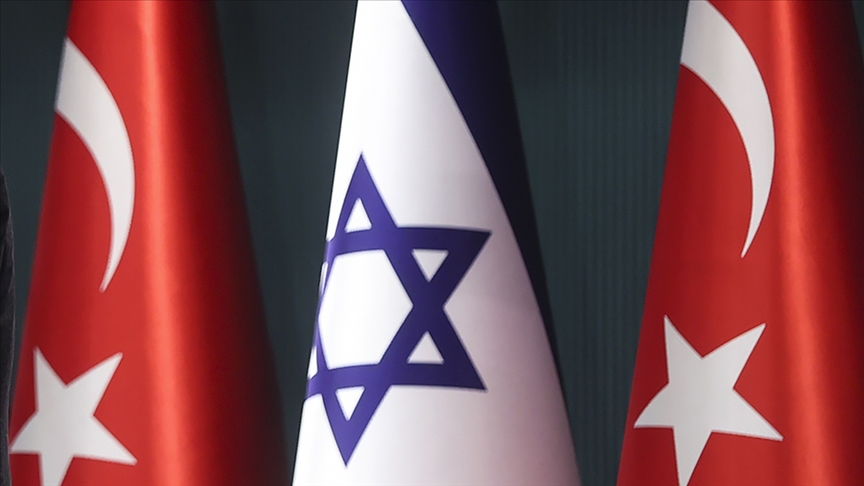With the Gaza-Israel war that began on October 7, 2023, world attention focused on this war’s destructiveness. Along with the war, while there was discussion about how Iran, one of Hamas’s most prominent supporters, would take a stance against Israel, it has been observed that Iran chose the diplomatic path in appearance rather than becoming directly involved in this war. However, alongside Iran’s efforts to resolve through diplomacy, it is seen that Iran is trying to use Hezbollah in Lebanon and the Houthis in Yemen through its proxies to retaliate against Israel in this war. In Yemen, the Houthis have not only prevented Israeli ships from passing through the Red Sea since the Israel-Gaza war but have also demanded the cessation of Israeli army attacks on Gaza.
Although it was stated that the Houthis carried out attacks on Israeli ships, they have not refrained from showing force against ships of countries supporting Israel. We can comment that the Houthis, who have disrupted Red Sea shipping traffic and maintain an aggressive attitude against the U.S. and Israel, will continue to be discussed in the region and occupy the agenda.
Iran’s Foreign Policy Motivation and Proxy Forces
After the Islamic revolution in Iran in 1979, an Islamic-based republic was established under the leadership of Ayatollah Khomeini. One of the Islamic Republic’s motivations in foreign policy was the discourse of exporting the Islamic revolution, which aimed to unite all Shia Muslims worldwide under one roof in other countries where Shia Muslims lived. This discourse gave way to the pragmatic discourse of new Religious Leader Ali Khamenei, who replaced Khomeini after he died in 1989. Iran has not been involved in a direct conventional war since 1988 but has also acquired a new complex power instrument in foreign policy. This power allowed Iran to shape the Middle East within the framework of its ideology with the establishment of Hezbollah in Lebanon. Iran, which has adequate power in Iraq, Syria, and Yemen alongside Hezbollah in Lebanon, has taken important steps toward establishing a Shia crescent in the region, as many experts have indicated. However, the Yemen Houthis, one of Iran’s proxy forces in the region, differ in many ways from Iran’s other forces. Although the Yemen Houthis are said to be under Iran’s guidance, it is noteworthy in terms of showing that they can act independently from Iran, as evidenced by the Houthis disrupting trade traffic in the Red Sea despite Iran’s diplomatic activities in the Israel-Gaza war.
The Houthis and Their Emergence in Yemen
To evaluate the Houthis that emerged in Yemen, we need to consider the country’s sectarian distribution. According to 2017 estimates, while Yemen’s population was around 14 million, about 35% of the population was affiliated with the Shia sect. The Houthi movement, which is affiliated with the Shia sect, emerged in the region within the Sunni and Shia divisions supported by the Saudis.
The Houthis emerged as a reaction movement against the Saudis’ financial and religious influences in Yemen in the 1990s. The Houthis, who followed the Zaidi belief and were the closest branch of Shiism to Sunnism, emerged as the Believing Youth Movement and later took the name Ansarullah Movement. The Houthi movement was founded by Hussein Badreddin al-Houthi in 1992. They crossed the Saudi border in 2014 and started the Yemen Civil War by attacking the Central Yemen Government supported by Saudi Arabia—Tehran’s support for the Houthis returns to the Yemen Civil War period. While Iran supported the Houthi movement in the Yemen Civil War, Saudi Arabia assisted the Yemen Central Government. With the civil war, what we can call Proxy Wars between Iran and Saudi Arabia began. The Houthis, supported by Iran, have controlled the capital Sanaa since 2014. Consequently, the Tehran administration’s sphere of influence has spread to the Red Sea as a result of Iran’s financial and military support for the Houthis in the Yemen Civil War. The Arab Coalition forces, consisting of 10 countries and established under the leadership of Saudi Arabia, where President Abdrabbuh Mansur Hadi went after the deposed leader Ali Abdullah Saleh, launched operations against the Houthis in March 2015 and supported the legitimate government. In 2015, under the leadership of Saudi Arabia and the UAE, they struck Houthi targets in Yemen.
The Houthis, who fought with Yemen’s central government forces between 2004 and 2010, began to increase their influence in the country after the fall of President Ali Abdullah Saleh’s administration in Yemen. With the influence they gained in North Yemen, the Houthis carried out a series of attacks on Aramco Oil Facilities in Saudi Arabia. As a result of this attack, Saudi Arabia lost half of the oil produced in the facilities. Iran calls the Houthis an Islamic movement rather than a terrorist organization and approaches them with sympathy. Academic sources in Iran comment that the Houthi movement emerged from Yemen’s poverty against the unlimited power of the Saudis. However, Iran’s comments about the Houthis have practically changed with the resumption of relations signed between Riyadh and Tehran in 2023. As a result of the agreement signed with Saudi Arabia, the Tehran administration committed to respecting Saudi Arabia’s sovereign rights. The condition that “Yemen belongs to Yemenis,” which was a prerequisite for the agreement by Saudi Arabia, was accepted by the Tehran administration. Iran has reduced its support for the Houthis due to its agreement with the Riyadh administration, with which it sat at the diplomacy table through China.
Assessment
The Houthis, who disrupted Red Sea shipment traffic after the Israel-Gaza war, have caused a headache for significant powers supporting Israel, particularly the U.S., due to the problems they cause to maritime traffic in the region. Although Iran supports the Houthi movement in Yemen, Iran has had to restrict its support for the Houthis due to the agreement between Iran and Saudi Arabia. When we look carefully at Iran and Yemen’s Houthi relations, it gives the impression that they are not under Iran’s guidance like Lebanon’s Hezbollah. Iran follows a diplomacy-heavy policy in its foreign policy as a result of the sanctions and uprisings it experiences in domestic issues. Although Iran takes a threatening stance against the U.S., it cannot take serious steps against threats to close the Strait of Hormuz, which is one of the important routes of oil traffic.
On the other hand, it is beneficial to state that the trade route extending from India to Europe, which the Western world presents as an alternative to China’s New Silk Project, is a geopolitically troubled route due to reasons such as being under threat from the Houthis and aiming to exclude Turkey and Iran, which are the dominant powers of the region. The attempt to hit an Indian-flagged ship passing through the Southern Red Sea by the Houthis raises questions about how successful this trade route will be due to the removal of Turkey and Iran, two dominant powers, from the equation.
As a result, we can state that relations between Iran and the Houthis are pretty uncertain and that the steps taken by the Tehran administration have aroused some suspicions among the Houthis. Finally, although Iran has recently carried out missile attacks on points located in Pakistan, Iraq, and Syria, considering that Iran has not been involved in conventional warfare since its war with Iraq, we can determine that these attacks are of limited operation value due to being limited in scope and directed at MOSSAD and ISIS targets. Iran’s regional foreign policy has changed due to the Raisi administration coming to power and may continue to change.










